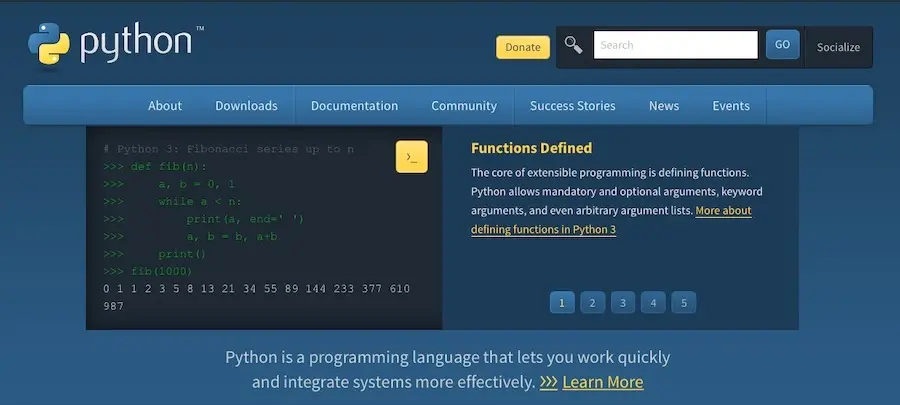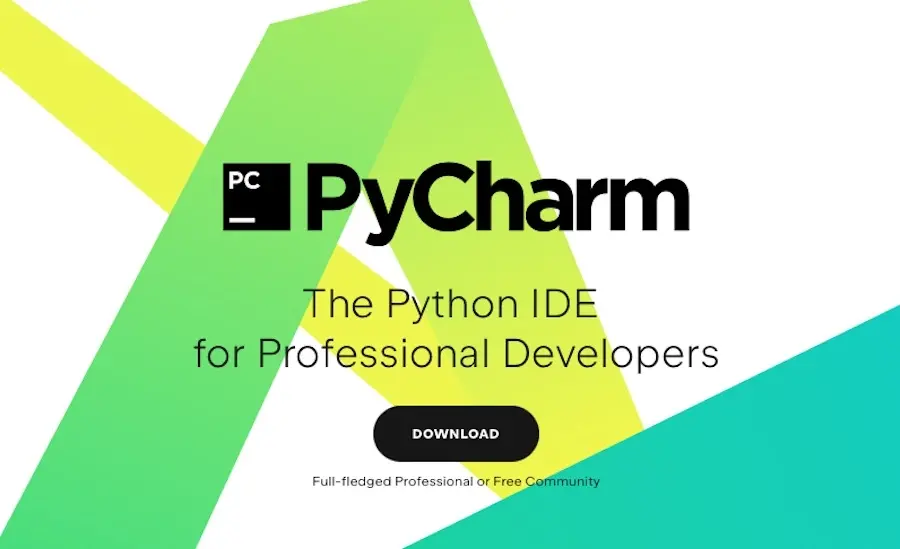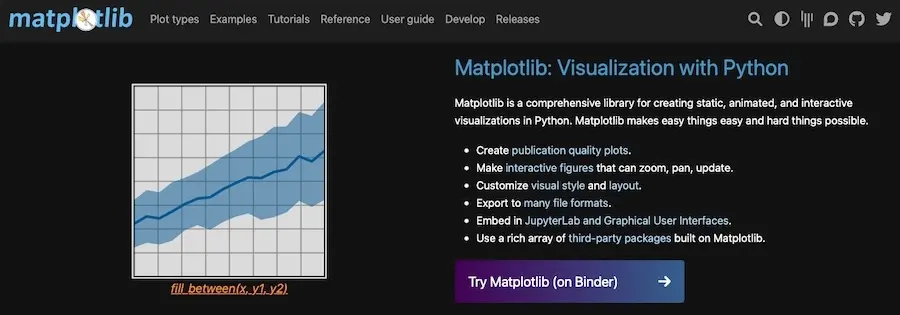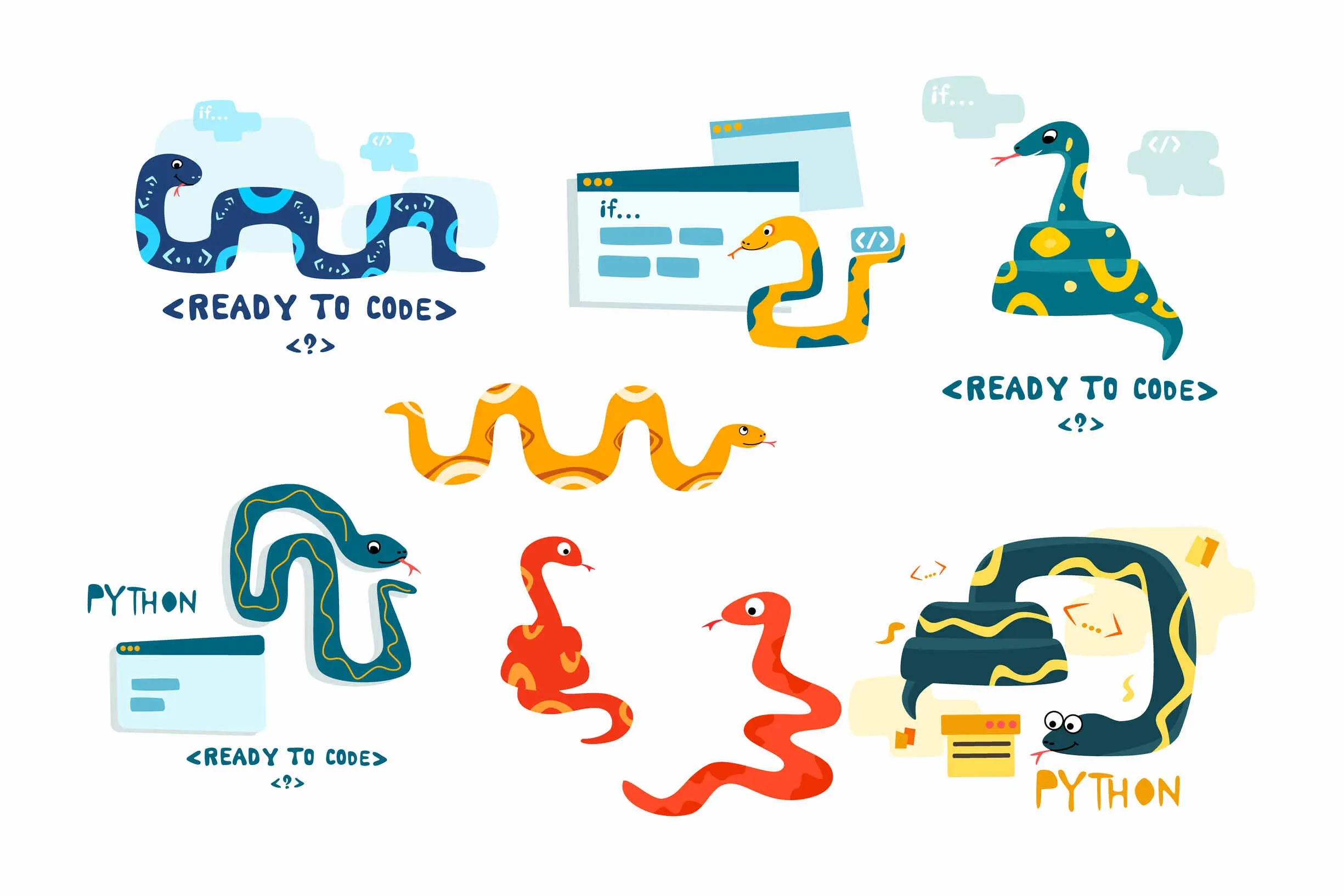Python is a high-level, interpreted programming language that lays the foundation for many websites and apps you interact with daily.
With its clear, readable syntax and versatility, it's a go-to language for everything from simple scripts to complex machine learning algorithms.
So, whether you're new to coding or an experienced developer looking to add another language to your toolkit, Python is a fantastic choice.
Today, we're covering the fundamentals, with a guide to walk you through the basics of getting started with Python.
Why Choose Python?

Python is often the first language taught in computer science courses, and for good reason. Its syntax is simple and clean, with an emphasis on readability, which makes it an excellent language for beginners.
But don't let this simplicity fool you.
Python is incredibly powerful and versatile. It's used in web development, data analysis, artificial intelligence, and more. It also has a deeply involved community that surrounds it that's always ready to help, and a wealth of libraries and frameworks that can make your efforts to learn smoother and more enjoyable.
And much like JavaScript, it’s incredibly versatile. But enough of the convincing. You're here reading this, so you're likely ready to begin working with Python already. To that end, let's talk about setup.
Setting Up Your Python Environment
Before you start coding, you'll need to set up your Python environment. This involves installing Python and choosing an Integrated Development Environment (IDE). Python installation is straightforward, and you can download it from the official Python website.
As for the IDE, it's a software application that provides comprehensive facilities to computer programmers for software development.
Some popular Python IDEs include PyCharm and Jupyter Notebook. An IDE can help you write, debug, and test your code more efficiently.

You'll also want to get familiar with pip, Python's package installer. Pip allows you to install libraries and frameworks that can help you do more with Python.
Understanding Python Basics
With your Python environment ready, it's time to immerse yourself in the language. Python's syntax is crafted with clarity and simplicity in mind, making it an appealing choice for newcomers.
Let's explore some foundational concepts:
Variables and Data Types: In Python, you'll work with various data types like integers, floating-point numbers, strings, and boolean values. These can be stored in variables, allowing you to name and manage data within your code.
Operators: These are special symbols in Python that perform specific computations. Whether it's arithmetic calculations or logical comparisons, operators are essential tools in crafting expressions.
Control Structures: Python offers control structures to guide the flow of your program. Conditional statements such as if, else, and elif allow you to make decisions, while loops like for and while enable you to repeat actions.
Functions: A function in Python is a well-structured, reusable chunk of code designed to execute a particular task. By defining functions, you can encapsulate logic and make your code more modular and maintainable.
These fundamental building blocks lay the groundwork for Python programming. And through the understanding and mastering of these concepts, you'll be well on your way to becoming proficient in Python.
Of course, to truly master Python, you'll need to dive a bit deeper.
Diving Deeper: Python Data Structures
In Python, data structures play a vital role in organizing and storing data efficiently. Let's delve into some of the core data structures that Python offers:
Lists: Think of a list as an ordered collection of elements that you can modify. You define a list using square brackets, and it allows you to store multiple items of different data types.
Tuples: Similar to lists, tuples are ordered collections. However, once you create a tuple (using round brackets), you can't change its contents. It's a fixed, immutable sequence of elements.
Sets: If you need a collection without any duplicates, a set is your answer. Defined with curly brackets, a set in Python embodies the mathematical concept of a set, where order doesn't matter, and each element is unique.
Dictionaries: When you need to associate keys with values, dictionaries come into play. They are unordered collections, defined using curly brackets, where each key must be unique, and the values can be anything you like.
Getting familiar with these data structures is important for becoming proficient in Python programming. Each one has specific characteristics and use cases, and knowing when to use which can be a significant asset in your coding work.
File Handling in Python
Working with files is, of course, a key part of programming, as it allows your programs to interact with data stored on your computer.
Python makes file handling easy. You can open a file, read its contents, write to it, and close it, all with a few simple commands. This is particularly useful when you're working with large data sets or when you need to save your program's output for later use.
Introduction to Python Libraries
Python's strength and adaptability stem from its extensive assortment of libraries. These libraries are essentially bundles of pre-coded functions and methods that you can leverage to accomplish common tasks without having to write the code from scratch.
Here's a glimpse into some of the libraries that you may find yourself relying on:
1. NumPy

A fundamental package for scientific computing in Python, NumPy enhances support for large arrays and matrices. It's packed with a rich collection of advanced mathematical functions to work on these structures, making complex computations more accessible.
3. Matplotlib

If you're looking to visualize data, Matplotlib is the go-to library. Integrated with NumPy, it offers an object-oriented approach for embedding various types of plots and graphs into applications, compatible with several GUI toolkits like Tkinter, wxPython, Qt, or GTK.
These libraries are just the tip of the iceberg, and they can be effortlessly installed using Python's package manager, pip. They open up a world of possibilities, extending Python's functionality and making it a versatile tool for various domains.
How to Develop Your Python Skills
Now that you know the basics of how to get started with Python, the next step is to continue building up your skills. Here are some helpful tips for improving your proficiency:
- Take an online course or tutorial to understand the fundamentals.
- Work on practice problems and coding challenges.
- Read open source code and contribute to public projects.
- Utilize online communities for support and guidance.
- Participate in hackathons and coding competitions.
- Keep learning new libraries and frameworks.
With these techniques, you can hone your craft as an aspiring Python programmer.
Start Learning Python and Build
With Python's clean syntax and versatile libraries, you can build powerful applications. Whether you're a beginner or an experienced programmer looking to learn something new, now is the perfect time to start learning Python.
And no matter what you pursue, just know you can always trust the reliable cloud hosting offered by Verpex Hosting. Our secure, reliable, and optimized servers provide an ideal environment for your applications and websites.
Frequently Asked Questions
Do I need to know how to code to use WordPress?
Definitely not. There’s no need to learn coding, since most WordPress users aren’t developers. There’s many plugins and themes you can use to customize your website without coding.
Why are code reviews necessary?
Code reviews are a fundamental software engineering practice that helps ensure that high-quality code is produced and that the development process is efficient, collaborative, and effective.
What is the role of a code reviewer?
The role of a code reviewer is to examine and analyze code written by another developer to identify issues, errors, or potential problems, and to suggest improvements. The code reviewer is responsible for ensuring that the code conforms to the established coding standards, guidelines, and best practices.
How can the impact of code review be measured?
The impact of code review can be measured by tracking key performance indicators, assessing the effectiveness of code review practices, and adjusting and refining the code review process based on performance data.

Brenda Barron is a freelance writer and editor living in southern California. With over a decade of experience crafting prose for businesses of all sizes, she has a solid understanding of what it takes to capture a reader's attention.
View all posts by Brenda Barron




















